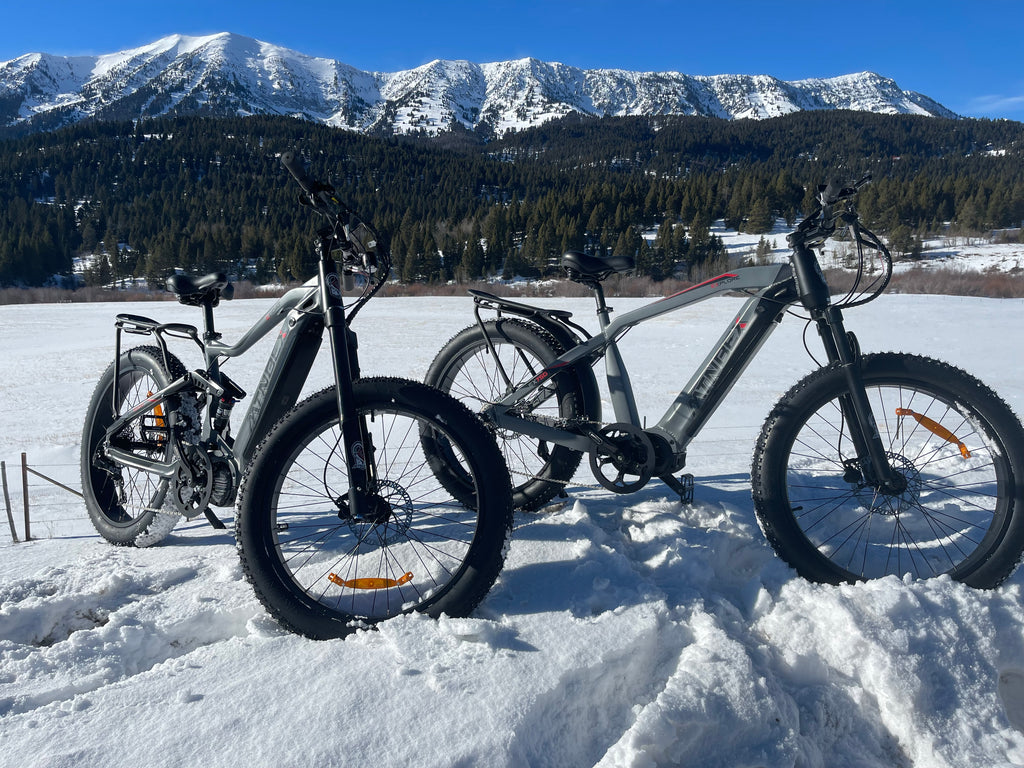Everyone shopping for a new mountain bike will inevitably face the choice between selecting a full-suspension bike or a hardtail ride. But the configuration that's right for you depends on different factors, such as weight, terrain, maintenance and cost. There are many things that come into play when deciding on your ideal setup.

Why suspension?
Suspension gives you greater comfort and control when riding over rough ground. Mountain biking is a diverse sport, one that takes in a wide variety of terrain. While relatively smooth trails may suit hardtails , full-suspension setups undoubtedly come into their own on bumpier, longer rides.
In gravity fed mountain biking disciplines, a full-suspension bike is the obvious choice for ultimate performance. The extra traction and capability negate any weight penalty caused by the shock and swingarm. But the real debate between hardtail and full-suspension bikes exists primarily in the Trail and Hunting.
Hardtail mountain bikes
With the lack of a rear shock, a hardtail gets its name from a rigid rear end. Like their full-suspension counterparts, hardtails are for off-road use and are typically cheaper and lighter than dual suspension bikes. But while a full-suspension bike may offer increased comfort and control while riding, a hardtail bike should not be overlooked.
Where does a full-suspension mountain bike excel?
Full-suspension mountain bikes perform much better over rough terrain and will thrive on many courses where a hardtail will struggle. This is primarily due to the traction provided by the rear suspension.
On bumpier trails, the rear shock helps ensure the tyres remains in contact with the ground to enable improved traction, rather than rebounding off the bumps and loosing grip. As you hit the roots and rocks at speed, full-suspension bikes also significantly dampen the force through the pedals and handlebars. A smoother ride no doubt helps improve comfort at keep fatigue at bay during longer rides and races.
The enhanced compliance from the rear end also ensures that full-suspension bikes provide for a wider margin of error. They enable better traction, control, and steering, reducing the risk of mistakes on rougher terrain.
Confidence is a massive part of mountain biking, especially for newcomers to the sport. As full-suspension mountain bikes are more forgiving, those minor accidents and scares that slow a rider's progress are often less common. But while the advantages are clear, the added convenience comes with a price- extra weight, higher costs and increased maintenance.
Where does a hardtail mountain bike excel?
Hardtail bikes tend to excel on slower, tighter trails and where the dirt offers more traction. On less technical terrain, hardtails often provide a more direct, involving ride. The rigid back end offers superb power transfer to the rear wheel when climbing and sprinting.
Hardtail bikes enable riders to feel more connection with the trail. The extra responsiveness and feedback from the bike allow riders to pump through undulating terrain and generate speed with maximum efficiency. Many also argue that they make a better rider too. Without the forgiving handling associated with full-suspension bikes, riders must anticipate the reaction to sudden shifts in direction and take better lines into corners.
One other key consideration, taken very seriously by those competing at the highest level in XC, is the weight savings which a hardtail offers. On average full suspension models are 1.5kg heavier, and this can make all the difference when trying to save seconds on the ascents.
Budget is also usually a factor when considering your next bike. If equipped with similar component ranges, hardtails are usually cheaper than a full suspension option by about 1000usd. Additionally, hardtails require less maintenance as riders only have to set up the front suspension and less moving components on the frameset itself.
Whether you choose a hardtail or a full-suspension model will depend very much upon the terrain and your budget. But know that quality builds exist for both, and within each camp, there are options available at various price points. For those entering hunting or trail riding, hardtail vs full suspension remains a key consideration, but we hope this has made the decision making that bit easier. We'll see you on the trails!


